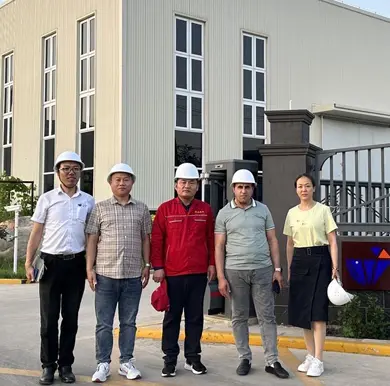
Dec . 04, 2024 12:56 Back to list
Applications and Benefits of HPMC in Various Industries and Formulations
The Use of HPMC An Overview
Hydroxypropyl methylcellulose (HPMC) is a versatile and widely utilized polymer derived from cellulose, a naturally occurring polymer found in plants. HPMC has garnered significant attention in various industries, particularly in pharmaceuticals, food, cosmetics, and construction, due to its unique properties such as solubility in water, film-forming ability, and binding capabilities.
Properties of HPMC
HPMC is a semi-synthetic cellulose ether that possesses a range of favorable characteristics. One of the most notable aspects of HPMC is its ability to dissolve in water, forming a viscous, gel-like solution. This property makes it an excellent thickening agent. Additionally, HPMC is non-toxic and hypoallergenic, making it suitable for applications in sensitive industries, particularly in pharmaceuticals and food products.
The polymer's film-forming ability enables it to create barriers on surfaces, which is beneficial in various applications such as coatings for tablets, providing a controlled release of active pharmaceutical ingredients. Furthermore, HPMC's emulsifying properties allow it to stabilize mixtures of both oil and water, which is particularly useful in cosmetic formulations and food products.
Applications in Pharmaceuticals
In the pharmaceutical industry, HPMC is primarily used as an excipient in the formulation of oral dosage forms, such as tablets and capsules. Its unique properties facilitate controlled drug release, improving therapeutic efficacy and patient compliance. By altering the molecular weight and concentration of HPMC, formulators can design drug delivery systems that provide sustained or targeted release.
Moreover, HPMC is employed in the preparation of hydrophilic matrices, which are crucial for extended-release formulations. These matrices swell upon contact with water, gradually releasing the drug over an extended period. This controlled release mechanism is particularly advantageous for medications that require consistent blood levels, reducing the frequency of dosing.
Additionally, HPMC is utilized as a thickening and stabilizing agent in liquid formulations, such as syrups and suspensions. Its ability to enhance the viscosity of liquids ensures uniform distribution of active ingredients, providing a more effective therapeutic outcome.
Role in Food Products
use of hpmc

In the food industry, HPMC serves multiple purposes, primarily as a thickener, stabilizer, and emulsifier. It is commonly found in processed foods, sauces, dressings, and dairy products. Its water retention capabilities help maintain moisture in various food items, improving texture and extending shelf life.
HPMC's ability to create a gel-like consistency is especially valuable in gluten-free and low-fat baking, providing the desired structure that is often lacking when traditional gluten-containing ingredients are omitted. The use of HPMC in food not only contributes to texture but also enhances the overall sensory experience.
Contribution to Cosmetic Formulations
The cosmetic industry has also embraced HPMC for its versatile properties. It is found in a variety of personal care products, including lotions, creams, and shampoos. As a thickening agent, HPMC improves the viscosity and stability of formulations, ensuring a pleasant application experience.
Moreover, HPMC acts as a film former in cosmetic products, providing a smooth and even layer upon application. This feature is particularly beneficial in products such as sunscreens and hair styling gels, where a uniform film can enhance protective and aesthetic qualities.
Construction Applications
In construction, HPMC is utilized in various applications, including cement, plaster, and tile adhesives. Its water-retention properties help prevent premature drying during application, ensuring better adhesion and overall durability. HPMC also enhances the workability of construction materials, making them easier to mix and apply.
Conclusion
The multifaceted nature of HPMC makes it an essential component across a wide range of industries. Its unique properties, including water solubility, film formation, and stability, contribute to its widespread use in pharmaceuticals, food products, cosmetics, and construction. As research continues to explore the potential applications of HPMC, it is likely that its role in these industries will expand, offering innovative solutions that enhance product performance and consumer satisfaction. Whether in the form of a tablet coating, a thickening agent in food, or a stabilizer in cosmetics, HPMC stands as a testament to the versatility of polymeric materials in modern applications.
-
Versatile Hpmc Uses in Different Industries
NewsJun.19,2025
-
Redispersible Powder's Role in Enhancing Durability of Construction Products
NewsJun.19,2025
-
Hydroxyethyl Cellulose Applications Driving Green Industrial Processes
NewsJun.19,2025
-
Exploring Different Redispersible Polymer Powder
NewsJun.19,2025
-
Choosing the Right Mortar Bonding Agent
NewsJun.19,2025
-
Applications and Significance of China Hpmc in Modern Industries
NewsJun.19,2025







